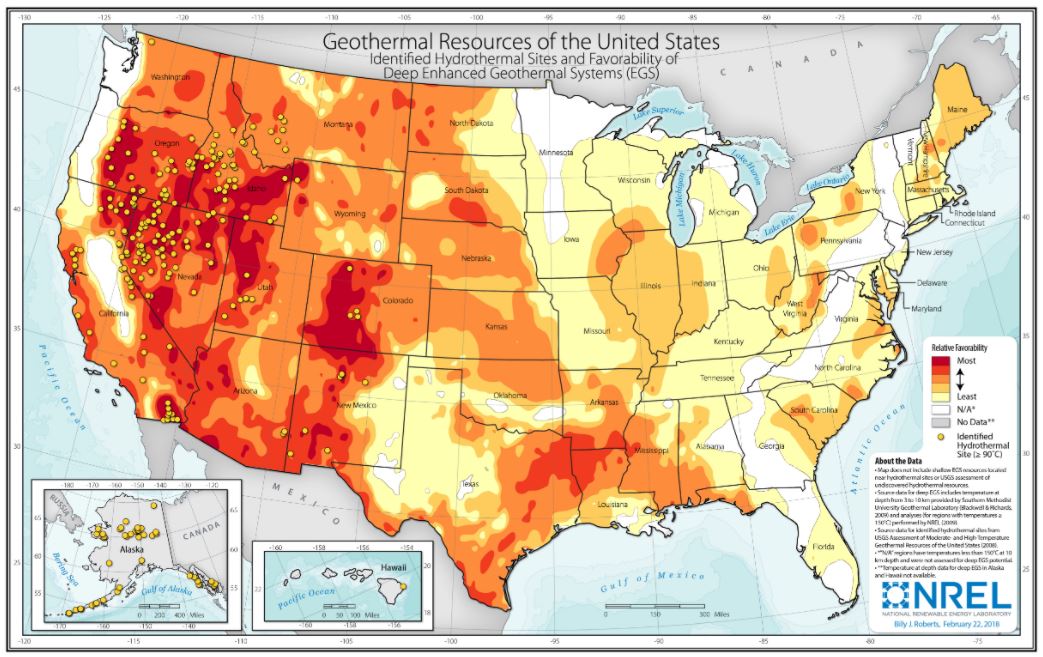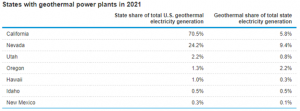GEOGRAPHIC CONSIDERATIONS
Geothermal electricity generation requires water or steam at high temperatures (300° to 700°F). Geothermal power plants are generally built within a mile or two of the earth's surface of where geothermal reservoirs are located.
 Source: National Renewable Energy Laboratory, 2018 [2]
Source: National Renewable Energy Laboratory, 2018 [2]
Most of the geothermal power plants in the United States are in western states and Hawaii, where geothermal energy resources are close to the earth's surface. California generates the most electricity from geothermal energy.[2] In 2021, there were geothermal power plants in seven U.S. states (California, Nevada, Utah, Oregon, Hawaii, Idaho, New Mexico) producing about 16 billion kWh, equal to 0.4% of total U.S. utility-scale electricity generation. California, followed by Nevada, are the major producers generating 70.5% and 24.2%, respectively, of the total U.S. geothermal electricity generated in 2021.[3]

Source: U.S. Energy Information Administration[4]
Geothermal energy was the first form of renewable energy that the U.S. Bureau of Land Management (BLM) approved for production on public lands, with the first approved geothermal project in 1978. BLM currently manages more than 240 million acres of public lands open to geothermal leasing, including 104 million acres of Forest Service-managed lands. Nearly all of the potential for development of Federal geothermal energy is located in 11 western States and Alaska. BLM currently manages over 800 geothermal leases, 50 of which are in production. Together these leases generate almost 1,900 megawatts of electrical capacity, representing about 40 percent of the total U.S. geothermal energy generated.[5] California is the largest producer of geothermal energy on BLM-managed public lands, with rent and royalties generating $7.85 million per year. In Nevada the BLM administers 19 geothermal power plants with Federal interest, totaling over 600 megawatts of installed capacity, and more development is in the works.[6]
Updated June 2022 by Diane M. Long

Comments are closed.